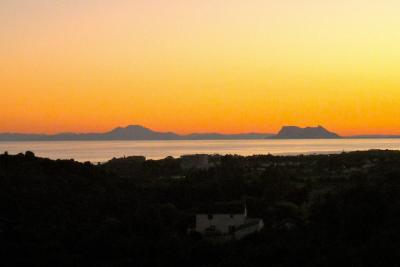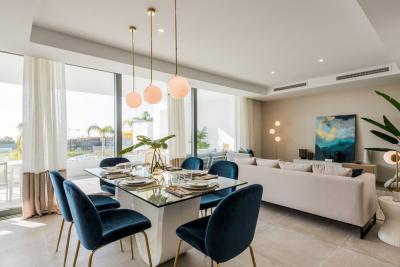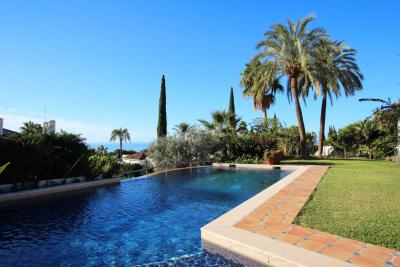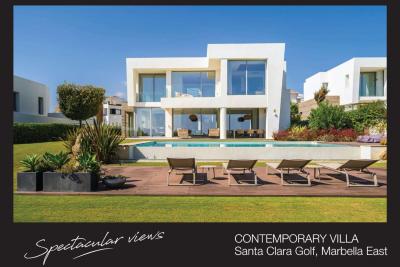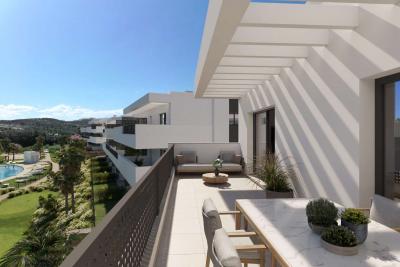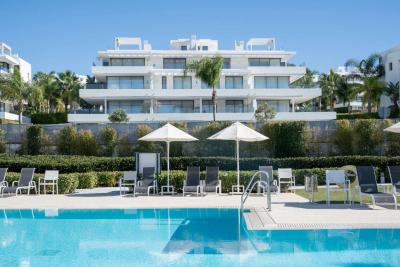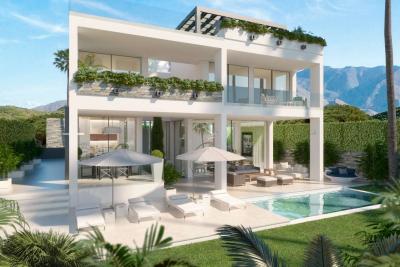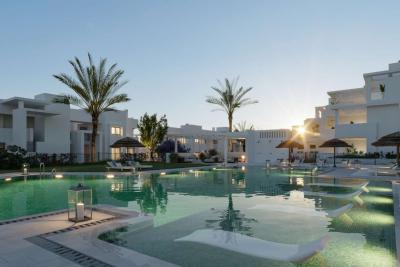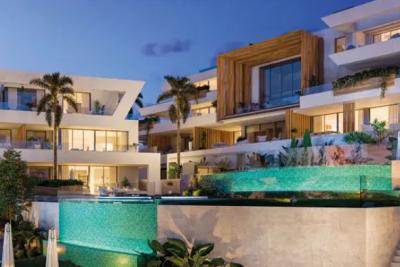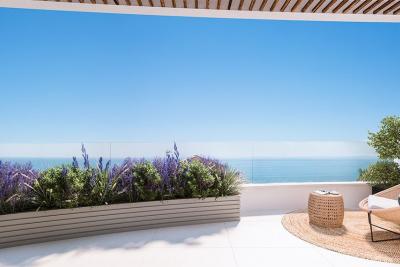106 Wonderful new homes distributed in 5 blocks: in Phases I and Phase II. Wonderful 2 and 3 bedrooms on the ground floor with garden, on the first and second floor.
The Phase 1 consisting of blocks 1 and 2 (with 44 homes), with swimming pool, Golf Putting Green, Spa and Coworking.
The Phase 2 consisting of blocks 3, 4 and 5 (with 62 homes), with gymnasium, children's area, sports court, and meditation area.
It has the green seal of qualification for sustainable building.
This is a beautiful a new residential complex located in Estepona where you will find much more than a home: you will find a beautiful garden where you can extend your home and relaxation. The complex is made up of 106 multi-family homes with 2 and 3 bedrooms with underground parking space and storage room. Within the large common areas, we find many plant species that surround the pool, as well as a gym, outdoor meditation area, spa, community room with co-working area, beach volleyball court, children's area and putting green (Golf entertainment). All these common uses, together with the prominence of the gardens with palm trees, citrus, and aromatic plants, as well as paths through these green areas, make this development the perfect place to enjoy the climate, nature, and tranquillity.
Phase I, units available:
-> Ref. 9993-1-1GF-A | Bedroom: 3 | Parking: 1 | Storage room: 1 | Useful area (m2): 85 | Built area (m2): 97.10 | Garden (m2): 37.40 | Terrace (m2) 17.30 | Orientation: South-West | Sales price: €382.000.
-> Ref. 9993-1-1-B | Bedroom: 2 |Parking: 1 | Storage room: 1 | Useful area (m2): 65 | Built area (m2): 74,30 | Garden (m2): 0 | Terrace (m2): 22 | Orientation: South-West | Sales price: 362.000 €.
-> Ref. 9993-1-2GF-C | Bedroom: 3 | Parking: 1 | Storage room: 1 | Useful area (m2): 82.6 | Built area (m2): 96,80 | Garden (m2): 24,90 | Terrace (m2) 22,90 | Orientation: South-West | Sales price: €385.000.
-> Ref. 9993-1-2-1A | Bedroom: 3 | Parking: 1 | Storage room: 1 | Useful area (m2): 85 | Built area (m2): 97,10 | Garden (m2): 0 | Terrace (m2): 15.90 | Orientation: South-West | Sales price: €379.000.
-> Ref. 9993-2-3-GFC | Bedroom: 3 | Parking: 1 | Storage room: 1 | Useful area (m2): 82.6 | Built area (m2): 96,80 | Garden (m2): 25.20 | Terrace (m2): 22.90 | Orientation: South-West | Sales price: 388.000 €.
Phase II, units available:
-> Ref. 9993-4-8-GFB | Bedroom: 2 | Parking: 1 | Storage room: 1 | Useful area (m2): 64.50 | Built area (m2): 74,30 | Garden (m2): 27.70 | Terrace (m2): 24.30 | Orientation: South-West | Sales price: RESERVED.
-> Ref. 9993-4-8-GFC | Bedroom: 3 | Parking: 1 | Storage room: 1 | Useful area (m2): 82.60 | Built area (m2): 96.80 | Garden (m2): 54.20 | Terrace (m2): 23.10 | Orientation: South-West | Sales price: €372.000.
-> Ref. 9993-4-8-1A | Bedroom: 3 | Parking: 1 | Storage room: 1 | Useful area (m2): 85 | Built area (m2): 97.10 | Garden (m2): 0 | Terrace (m2): 15.90 | Orientation: South-West | Sales price: €340.000.
-> Ref. 9993-4-8-1C | Bedroom: 3 | Parking: 1 | Storage room: 1 | Useful area (m2): 85 | Built area (m2): 97.20 | Garden (m2): 0 | Terrace (m2): 20.50 | Orientation: South-West | Sales price: BLOCKED.
-> Ref. 9993-4-8-2A | Bedroom: 3 | Parking: 1 | Storage room: 1 | Useful area (m2): 96 | Built area (m2): 107.40 | Garden (m2): 0 | Terrace (m2): 27 | Orientation: South-West | Sales price: €394.000.
Start of work: Q2 2024
Delivery date: Q3 2026
I am available to help you with more information and support.
See you soon!

